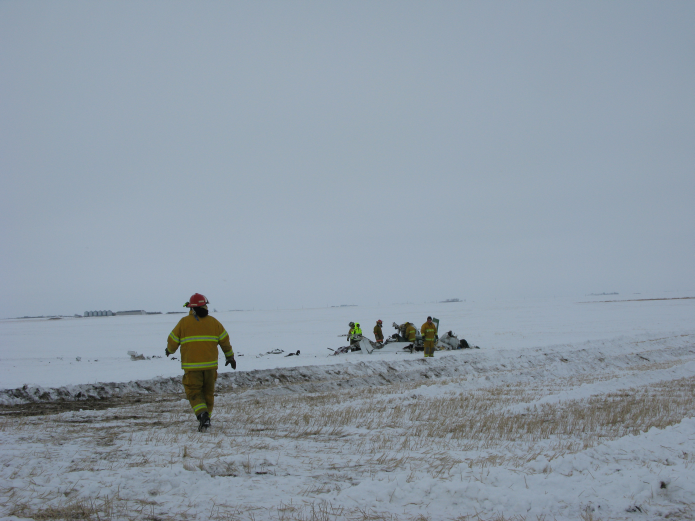Continued visual flight into instrument
meteorological conditions – Collision with terrain
Cessna 210C C-FWUX
Waskada, Manitoba, 3 nm N
The occurrence
At approximately 1230 Central Standard Time, the privately registered Cessna 210C, (registration C-FWUX, serial number 21058098) departed a private airstrip located at Waskada, Manitoba, with a pilot and 3 passengers on board for a sightseeing flight in the local area. Approximately 30 minutes after the aircraft departed, fog moved into the area. At 1317 Central Standard Time, an emergency locator transmitter signal was received in the area. A search was undertaken and the wreckage was located 3 nautical miles north of Waskada. All occupants suffered fatal injuries. There was no post crash fire.
Media materials
News release
Whiteout conditions and loss of situational awareness led to February 2013 Cessna crash in Waskada, Manitoba
Read the news release
Deployment notice
Transportation Safety Board of Canada deploys a team of investigators to Cessna 210 accident in Waskada, Manitoba
Gatineau, Quebec, 11 February 2013 - The Transportation Safety Board of Canada (TSB) is deploying a team of investigators to the site of an accident involving a Cessna 210 in Waskada, Manitoba. The TSB will gather information and assess the occurrence.
Investigation information
Download high-resolution photos from the TSB Flickr page.
Class of investigation
This is a class 3 investigation. These investigations analyze a small number of safety issues, and may result in recommendations. Class 3 investigations are generally completed within 450 days. For more information, see the Policy on Occurrence Classification.
TSB investigation process
There are 3 phases to a TSB investigation
- Field phase: a team of investigators examines the occurrence site and wreckage, interviews witnesses and collects pertinent information.
- Examination and analysis phase: the TSB reviews pertinent records, tests components of the wreckage in the lab, determines the sequence of events and identifies safety deficiencies. When safety deficiencies are suspected or confirmed, the TSB advises the appropriate authority without waiting until publication of the final report.
- Report phase: a confidential draft report is approved by the Board and sent to persons and corporations who are directly concerned by the report. They then have the opportunity to dispute or correct information they believe to be incorrect. The Board considers all representations before approving the final report, which is subsequently released to the public.
For more information, see our Investigation process page.
The TSB is an independent agency that investigates air, marine, pipeline, and rail transportation occurrences. Its sole aim is the advancement of transportation safety. It is not the function of the Board to assign fault or determine civil or criminal liability.
